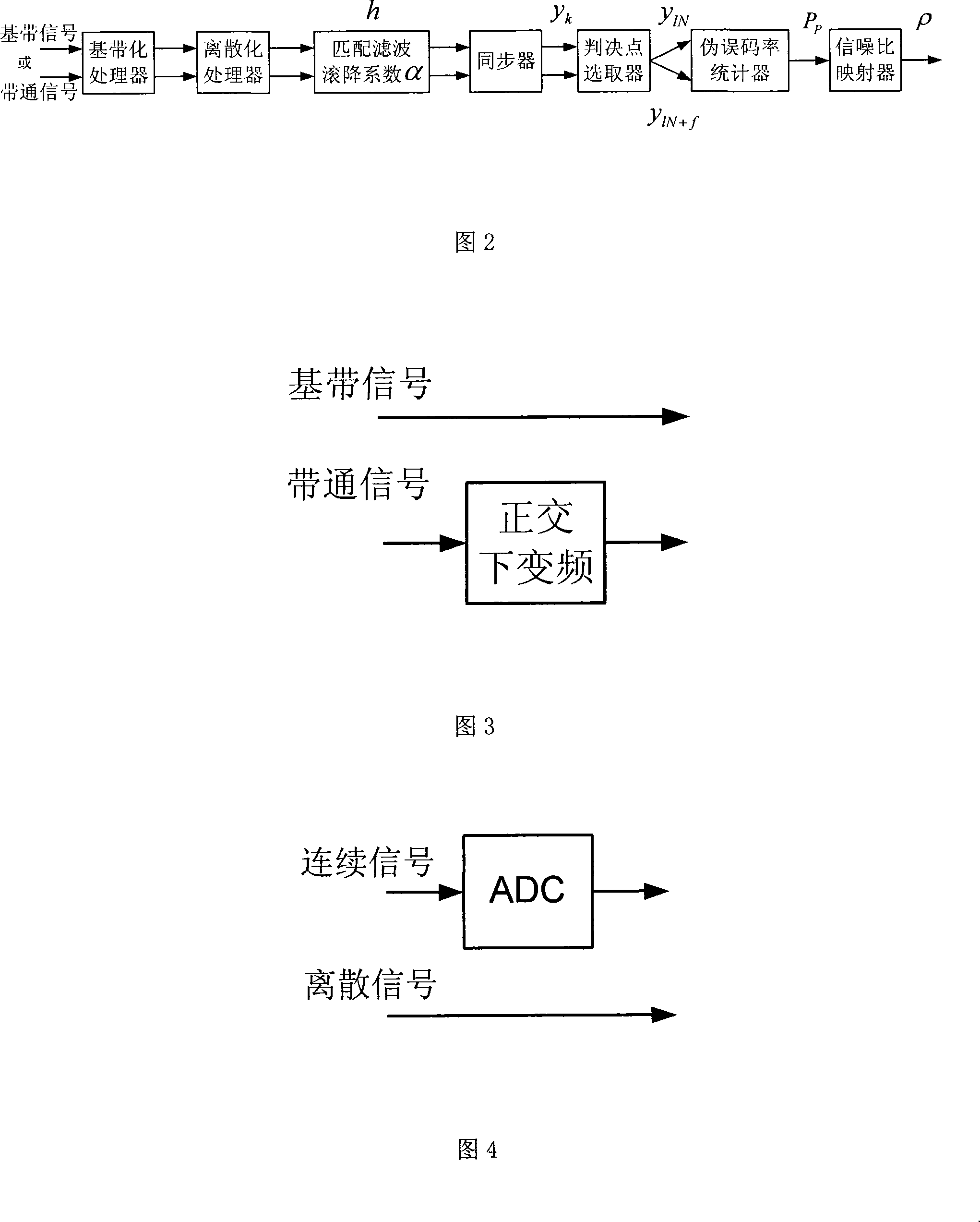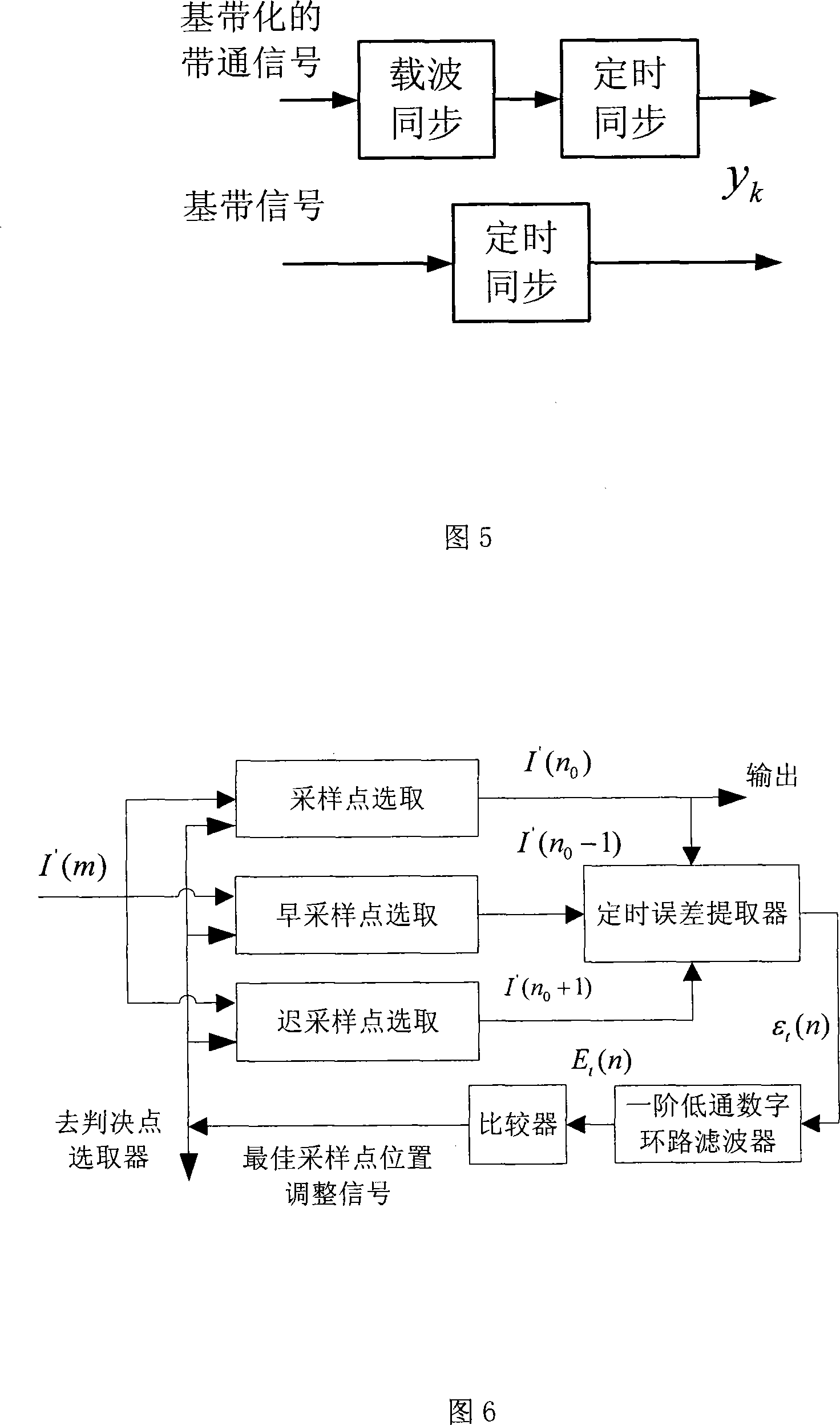Blind SNR estimating method based on pseudo-error rate statistics
A technology of bit error rate and blind belief, applied in the field of signal-to-noise ratio estimation in digital communication, can solve the problems of high cost and high computational complexity
- Summary
- Abstract
- Description
- Claims
- Application Information
AI Technical Summary
Problems solved by technology
Method used
Image
Examples
Embodiment Construction
[0066] Below in conjunction with accompanying drawing, introduce content of the present invention in detail:
[0067] Fig. 1 is a block diagram of the method for estimating the signal-to-noise ratio. As shown in Figure 1. After the signal received by the receiver passes through the baseband processor, discretization processor, matched filter, synchronization and other operations in sequence, a discrete sampling signal sequence without frequency and timing deviation is obtained. The sequence passes through the decision point selector to obtain two decision point sequences whose sampling rate is equal to the symbol rate; the sequence then passes through the pseudo bit error rate statistic device to obtain the estimated value of the pseudo bit error rate. Finally, the value is passed through the signal-to-noise ratio mapper to obtain the estimated signal-to-noise ratio.
[0068] Fig. 2 is a circuit block diagram of the signal-to-noise ratio estimator system. Corresponding to F...
PUM
 Login to View More
Login to View More Abstract
Description
Claims
Application Information
 Login to View More
Login to View More - R&D
- Intellectual Property
- Life Sciences
- Materials
- Tech Scout
- Unparalleled Data Quality
- Higher Quality Content
- 60% Fewer Hallucinations
Browse by: Latest US Patents, China's latest patents, Technical Efficacy Thesaurus, Application Domain, Technology Topic, Popular Technical Reports.
© 2025 PatSnap. All rights reserved.Legal|Privacy policy|Modern Slavery Act Transparency Statement|Sitemap|About US| Contact US: help@patsnap.com



